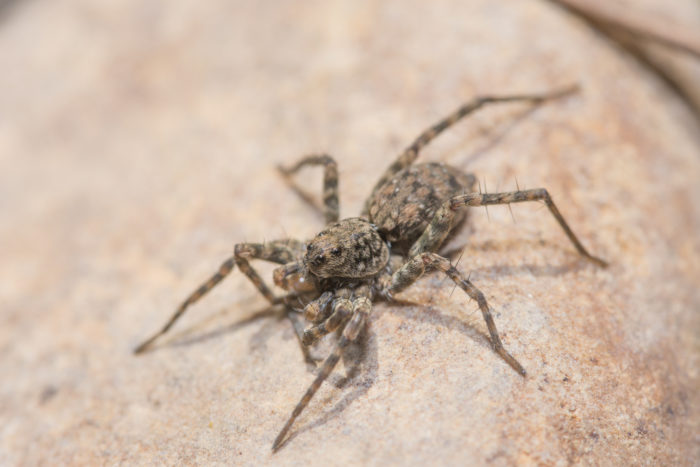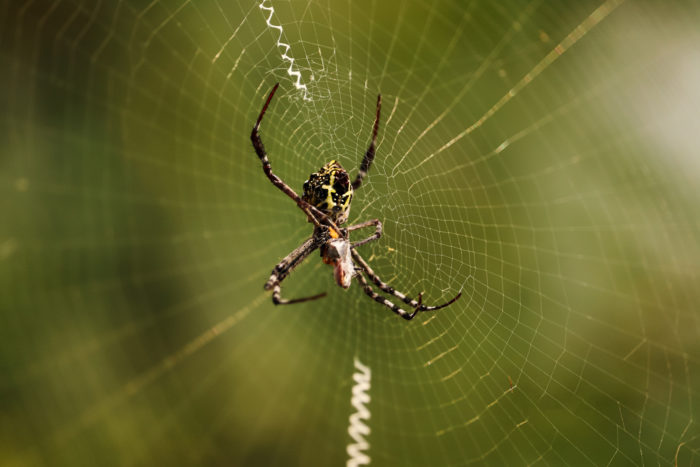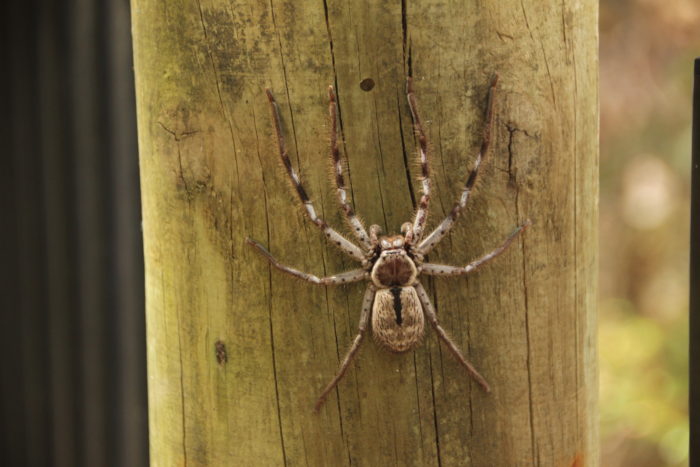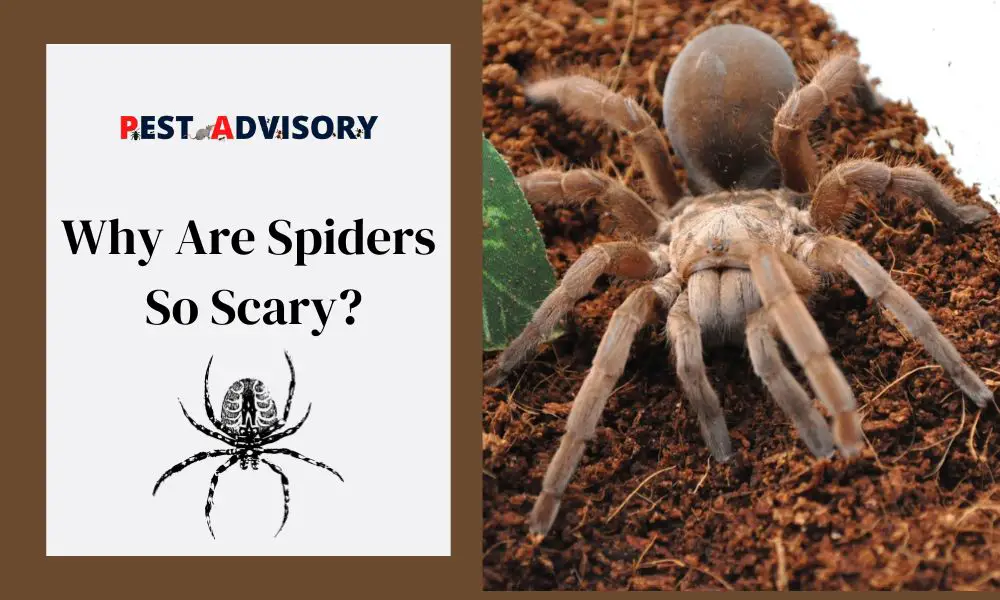Spiders: tiny eight-legged creatures that can evoke an inexplicable sense of dread.
But why do these arachnids hold such a grip on our collective imagination? From ancient survival instincts to cultural influences, our fear of spiders runs deep.
Join us as we embark on a journey to unravel the mysteries behind their terrifying charm.
Important Note: If you're tired of pests and want a reliable solution, then you should definitely consider seeking help from a professional pest control company. DIY solutions can be effective, but if you're dealing with a significant pest infestation, you don't want to rely solely on DIY methods. Pest control companies typically don't charge huge fees. You can fill out this form to receive free quotes from the top local pest control companies, and compare the quotes and see for yourself. Then, finally, your pest problems will be eliminated for good.
Prepare to confront the primal fears that lurk within as we decode why spiders are so undeniably scary.
Why do spiders look so scary?
Spiders may look scary due to their enlarged chelicerae, abdomen, and body hair. Additionally, having more of a body part, such as eyes, can seem unnatural to humans and trigger unease. Some people may also have a genetic predisposition to fear spiders.

Reasons What Makes Spiders So Scary to Human Beings
Evolutionary Factors
People fear spiders for ages ago. If we dig deep into the past it states that people’s fear of spiders may be the result of ecological or evolutionary factors.
During our evolutionary past, our ancestors faced numerous threats from venomous creatures, including spiders. Those individuals who developed a fear or aversion to spiders were more likely to survive and pass on their genes. This led to the development of an innate fear response to spiders, known as arachnophobia, which prevails today.
The study suggests that the fear of spiders may be a part of our ancient threat detection system, where we are biologically predisposed to quickly identify and avoid potential dangers. This heightened sensitivity to spiders may have offered a survival advantage in environments where encounters with venomous spiders were common.
While our modern environments may have changed significantly, the fear of spiders has persisted due to the deep-rooted evolutionary imprint. Understanding this evolutionary factor helps shed light on why spiders continue to provoke such a strong emotional response in humans.
By exploring the evolutionary factors behind our fear of spiders, we gain insight into the deep-seated nature of this phobia and how it has become ingrained within our species over time.

Cultural Influences
The perception of spiders as scary creatures is not solely influenced by biological factors; cultural influences also play a significant role in shaping our fears and anxieties surrounding them. Throughout history, spiders have been associated with darkness and danger.
Literature, folklore, and popular culture have contributed significantly to the portrayal of spiders as creepy and threatening beings. In many myths and legends, spiders are depicted as symbols of trickery, evil, and even supernatural powers. For example, in European folklore, the spider symbolizes witches and black magic.
Furthermore, spiders have made appearances in numerous works of literature and art, particularly in the horror genre. From classic novels like Bram Stoker’s “Dracula” to modern films like “Arachnophobia,” spiders are frequently depicted as creatures that elicit fear and provoke terror.
These cultural representations have a powerful impact on our collective psyche, reinforcing the perception that spiders are something to be feared. They contribute to the formation and perpetuation of our anxieties surrounding spiders, even if we have limited or no direct encounters with them in our daily lives.
By exploring the cultural influences on our fear of spiders, we gain an understanding of how societal beliefs, stories, and media representations have shaped our perceptions. It highlights the power of cultural narratives in reinforcing and amplifying our innate fears, ultimately contributing to the perception of spiders as terrifying creatures.
Fear Response and Disgust
The fear response to spiders is not merely a result of their appearance or cultural influences; it is deeply rooted in our biology and psychology. According to studies, our dislike of these arachnids is greatly influenced by our fear of spiders, which is strongly correlated with a strong disgust reaction.
Taking brain imaging studies into consideration, when individuals with arachnophobia are exposed to spider-related stimuli, the amygdala, a region of the brain that assists in processing emotions like fear is especially active. This suggests that the fear of spiders triggers a heightened emotional response in the brain.
Furthermore, research has found a connection between spiders and disgust, another
powerful emotion. Disgust is an adaptive response that helps protect us from potential sources of harm or disease. Spiders, with their often hairy appearance and association with webs and dark corners, can elicit feelings of disgust in many individuals.
The combination of fear and disgust creates a potent emotional cocktail when encountering spiders. This emotional response can be so intense that it triggers physical reactions such as increased heart rate, sweating, and even panic attacks in individuals with severe arachnophobia.
It’s important to note that not everyone experiences the same level of fear or disgust toward spiders. Some individuals may have a milder aversion, while others may develop a full-blown phobia. The specific reasons for these individual variations in response to spiders are still being studied.
By understanding the fear response and the association of disgust with spiders, we can appreciate the complex interplay between our emotions, perception, and physiological reactions. It underscores why spiders have such a potent effect on our psyche and contribute to their reputation as terrifying creatures.

Physical Characteristics
The physical characteristics of spiders contribute to their perceived scariness. Their unique anatomical features and behaviors often evoke a sense of unease and fear in humans.
Eight Legs
Spiders possess eight legs, which is significantly different from most other animals we encounter in our daily lives. This leg count can make them appear alien and unfamiliar, triggering an instinctual reaction of caution and wariness.
Fangs and Venom
Many spider species have fangs that they use to inject venom into their prey. The idea of being bitten by a spider and the potential harm associated with venom can elicit fear and concern.
Hairy Appearance
Spiders are often covered in fine hairs, known as setae. These hairs can give them a rough, creepy, or menacing appearance, adding to their overall fright factor.
Quick and Stealthy Movements
They can move swiftly and silently, making sudden appearances or disappearing into small spaces. This suddenness and ability to seemingly appear out of nowhere can startle and unsettle individuals.
Webs and Traps
Many spider species create intricate webs to capture their prey. The sight of a web, with its intricate design and the potential for entrapment, can evoke feelings of being trapped or ensnared.
These physical characteristics collectively contribute to the perception of spiders as intimidating and scary creatures.
Their unique appearance, coupled with their predatory behaviors and the potential harm associated with venom, make them visually and conceptually distinct from other creatures we encounter, further fueling our fear and unease.
Misconceptions and Overcoming Fear
The fear of spiders is often accompanied by misconceptions and exaggerated beliefs that contribute to the intensity of the fear response.
Addressing these misconceptions and gaining accurate knowledge about spiders can help individuals overcome their fear and develop a more rational perspective.
Here are some key points to consider
Harmlessness
While some spider species are venomous, the majority of spiders are harmless to humans. Understanding that most spiders pose little to no threat to our well-being can alleviate unnecessary anxiety.
Ecological Benefits
Spiders play a crucial role in ecosystems as natural pest controllers. They help keep populations of insects and other pests in check, contributing to a healthier environment. Recognizing the importance of spiders can foster a sense of appreciation for their role in nature.
Education and Exposure
Learning about spiders, their behaviors, and their characteristics can demystify them and reduce fear. Educational resources, such as books, documentaries, and guided experiences, can provide accurate information and help individuals gain a better understanding of these creatures.
Controlled Exposure Therapy
Controlled exposure to spiders, under the guidance of a trained professional, can be an effective method for overcoming arachnophobia. Gradually increasing exposure to spiders in a controlled environment helps individuals develop tolerance and reduce fear responses.
Mindfulness and Relaxation Techniques
Practicing mindfulness and relaxation techniques can assist in managing anxiety and fear when encountering spiders. Deep breathing, visualization, and other relaxation strategies can help individuals stay calm and composed in spider-related situations.
Overcoming the fear of spiders is a personal journey, and different approaches may work for different individuals.
By dispelling misconceptions, acquiring knowledge, and gradually exposing oneself to spiders, it is possible to reduce fear and develop a more nuanced perspective toward these fascinating creatures.
Note: It’s important to exercise caution when confronting fears, and seeking professional help or guidance is advisable, especially for individuals with severe arachnophobia.

Frequently Asked Questions
Do all spiders pose a threat to humans or just some species?
Not all spiders are dangerous to people. Even while almost all spider species carry venom, only a few of them are deadly to humans.
In actuality, most spiders don’t bite people and aren’t dangerous to us or other mammals.
Can watching spider videos help with arachnophobia?
Yes, watching spider videos can help with arachnophobia.
Exposure therapy is a common treatment for arachnophobia, and watching videos of spiders can gradually desensitize people to their fear.
Studies have shown that even watching a fictional representation of spiders, such as in a movie like Spider-Man, can reduce symptoms of arachnophobia.
Are there any physical symptoms associated with arachnophobia?
Yes, there are physical symptoms associated with arachnophobia. When in contact with, or thinking about spiders, individuals will likely experience symptoms of anxiety almost immediately.
Arachnophobia exhibits certain signs like sweating, shaking with fear, tightness in the chest, increased heartbeat, dizziness and even losing consciousness. These symptoms are the same as panic attacks and can be very dangerous for the individual.
Can exposure therapy be used to treat arachnophobia effectively?
Yes, one of the best therapies for arachnophobia is exposure therapy.
In exposure treatment, patients are gradually introduced to spiders in a safe environment. This process aids patients in overcoming their aversion to spiders by lowering their anxiety and enhancing their sense of control.
The therapist might start by showing pictures of spiders and then move on to videos or having the person be in the same room as a spider while it’s in a container.
This can be effective, as 90% of individuals reported improvement in their condition only after a few sessions.
Conclusion
The fear and scariness associated with spiders stem from a combination of evolutionary, cultural, and psychological factors.
Our ancestors’ survival instincts, cultural narratives, and innate disgust response contribute to our primal fear of spiders.
Additionally, their physical characteristics and misconceptions further amplify our anxieties.
By understanding these complexities, dispelling misconceptions, and gaining knowledge, we can begin to navigate our fears and develop a more balanced perception of these intriguing creatures.


I agree, 100%, that it is not fear of being bitten. It absolutely is their horrific appearance and their nature – dangling above you while you’re sleeping or sitting; lurking in dark, creepy corners and crevices; the speed at which they dart out towards their prey; those horrendous mouth pincer things….. EUGHHH!!!!